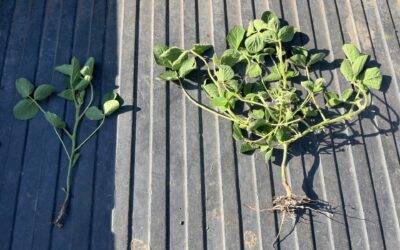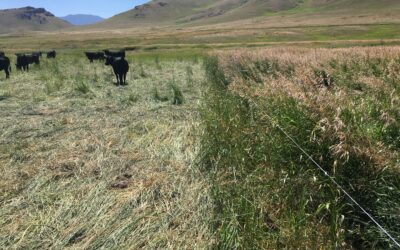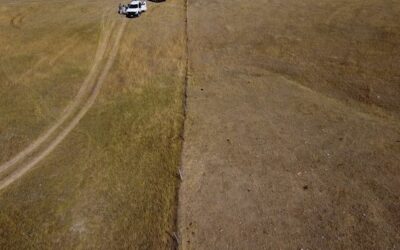Bulk Density
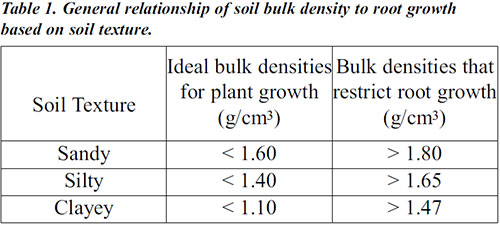 Bulk density is an indicator of soil compaction. It is calculated as the dry weight of soil divided by its volume. This volume includes the volume of soil particles and the volume of pores among soil particles. Bulk density is typically expressed in g/cm3.
Bulk density is an indicator of soil compaction. It is calculated as the dry weight of soil divided by its volume. This volume includes the volume of soil particles and the volume of pores among soil particles. Bulk density is typically expressed in g/cm3. Relationship to Soil Function
Bulk density reflects the soil’s ability to function for structural support, water and solute movement, and soil aeration. Bulk densities above thresholds in Table 1 indicate impaired function. Bulk density is also used to convert between weight and volume of soil. It is used to express soil physical, chemical and biological measurements on a volumetric basis for soil quality assessment and comparisons between management systems. This increases the validity of comparisons by removing error associated with differences in soil density at time of sampling.
Problems with Poor Function
High bulk density is an indicator of low soil porosity and soil compaction. It may cause restrictions to root growth, and poor movement of air and water through the soil. Compaction can result in shallow plant rooting and poor plant growth, influencing crop yield and reducing vegetative cover available to protect soil from erosion. By reducing water infiltration into the soil, compaction can lead to increased runoff and erosion from sloping land or waterlogged soils in flatter areas. In general, some soil compaction to restrict water movement through the soil profile is beneficial under arid conditions, but under humid conditions compaction decreases yields.
The following practices can lead to poor bulk density:
- Consistently plowing or disking to the same depth,
- Allowing equipment traffic, especially on wet soil,
- Using a limited crop rotation without variability in root structure or rooting depth,
- Incorporating, burning, or removing crop residues,
- Overgrazing forage plants, and allowing development of livestock loafing areas and trails, and
- Using heavy equipment for building site preparation or land smoothing and leveling.
Improving Bulk Density
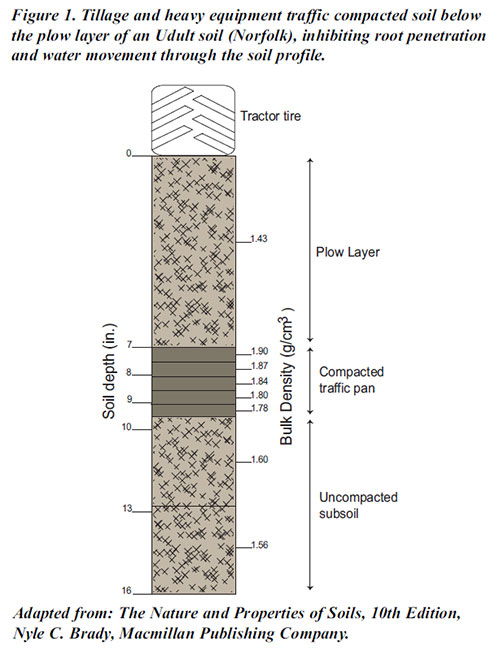 Any practice that improves soil structure decreases bulk density; however, in some cases these improvements may only be temporary. For example, tillage at the beginning of the growing season temporarily decreases bulk density and disturbs compacted soil layers, but subsequent trips across the field by farm equipment, rainfall events, animals, and other disturbance activities can recompact soil.
Any practice that improves soil structure decreases bulk density; however, in some cases these improvements may only be temporary. For example, tillage at the beginning of the growing season temporarily decreases bulk density and disturbs compacted soil layers, but subsequent trips across the field by farm equipment, rainfall events, animals, and other disturbance activities can recompact soil.
On cropland, long-term solutions to bulk density and soil compaction problems revolve around decreasing soil disturbance and increasing soil organic matter. A system that uses cover crops, crop residues, perennial sod, and/or reduced tillage results in increased soil organic matter, less disturbance and reduced bulk density. Additionally, the use of multi-crop systems involving plants with different rooting depths can help break up compacted soil layers.
To reduce the likelihood of high bulk density and compaction:
- Minimize soil disturbance and production activities when soils are wet,
- Use designated field roads or rows for equipment traffic,
- Reduce the number of trips across the area,
- Subsoil to disrupt existing compacted layers, and
- Use practices that maintain or increase soil organic matter.
Grazing systems that minimize livestock traffic and loafing, provide protected heavy use areas, and adhere to recommended minimum grazing heights reduce bulk density by preventing compaction and providing soil cover.
This Page Was Created Utilizing Text And Images From These Sources:
Bulk Density, Soil Quality Indicators Fact Sheet- USDA Natural Resources Conservation Service
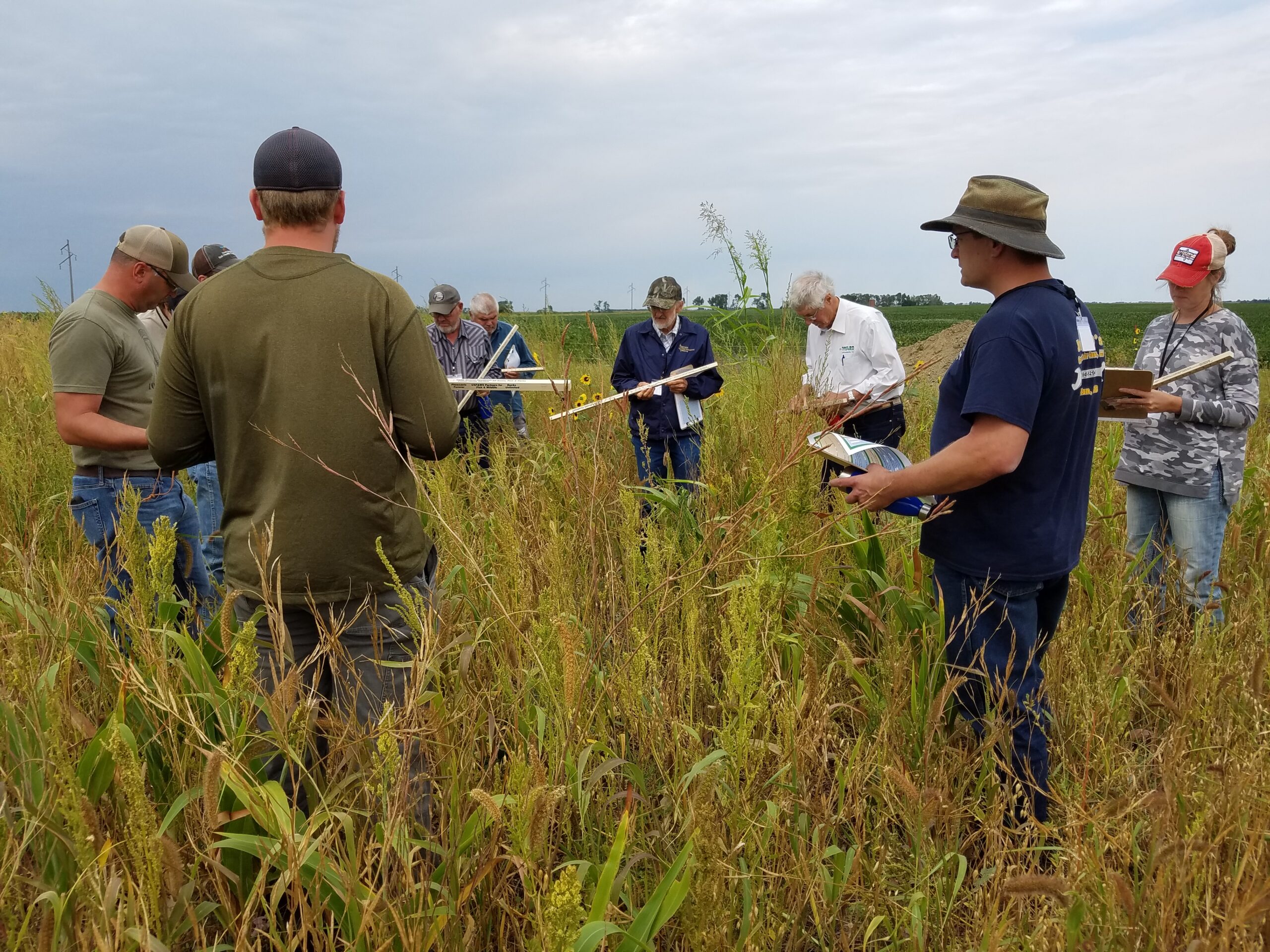
West River Soil Health School Registration Open!
In 2024, the South Dakota Soil Health Coalition will host an additional Soil Health School in west of the Missouri River! The 2024 West River Soil Health School with be held June 26-27 near Caputa, SD! This school will focus on issues specific to the land, climate, and ag production systems of wester South Dakota. Class size is limited, so early registration is strongly encouraged!
News & Events
Farmer reaps higher yields by interseeding soybeans
By Stan Wise Alex Frasier has spent a lot of time studying what it takes to grow a successful crop. After studying ag production and precision technology at Lake Area Technical College, he has worked in ag retail and currently works as an agronomist in Aberdeen, SD....
Farm and ranch innovators to share new ideas at Soil Health Conference
By Stan Wise PIERRE, SD — Before Cooper Hibbard came home to manage his family’s ranch, he studied ag business, rangeland resources and Spanish at California Polytechnic State University and then worked on ranches all over the world. That education and experience...
Wintertime is decision time
By Stan Wise PIERRE, SD – It’s often said that the best time to start improving your land was 20 years ago, but the second-best time is right now. That statement might be harder for ranchers to swallow with winter on their doorstep, nothing growing in their pastures,...
